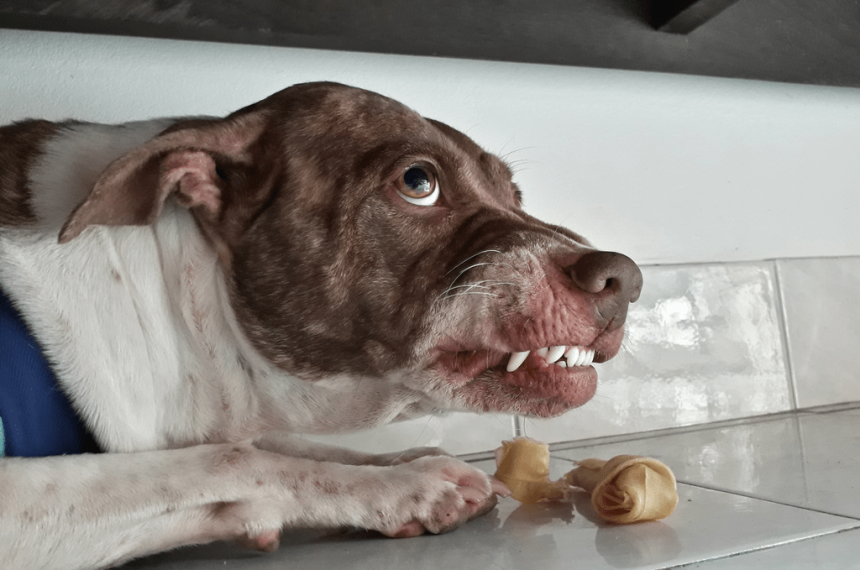The aggression response is a natural part of the leader dog's mindset of controlling their environment. But just because this is a natural behavior does not mean that it should be tolerated. Some dogs have a greater desire to control their environment than others. This will cause them to attack and bark a lot more.
Not every dog is the same because of its creation. Some have a wild instinct no matter how much they try to be domesticated. If your dog educated in some cases though if he becomes aggressive there could be many reasons for this.
Why Do Dogs Attack People?
The worst thing to think about for every dog owner is that he attacks his dog's owner. But there must be a reason for this. Experts believe that dogs are in fact hunting animals. Therefore, in such cases, the individual case should always be analyzed and no general assessment should be made.
Dogs in most cases, herd, owner or want to protect their own territory. Because this will be a natural reaction from his creation, you must meet normal and give orders to appease. Sometimes dogs defend themselves when they are mistreated.
Everything that moves gets your dog's attention because they have that special instinct in their blood. Even if your dog is in pain, you can do it to him Aggression, can transmit through.
Another reason is fear. Fear is a gift from the creator because fear is a primal instinct. With fear the living being will try to identify the danger around him and avoid him. Therefore, it also has a useful protective function.
Fear only becomes a problem when it significantly affects the quality of life of your dog. But on the contrary, it is normal only if he has an aggressive attitude when he is afraid.
Dogs' Past Lives Trigger Aggression
If a dog is not picked up or recognized while he is a puppy, he may exhibit some unprovoked aggressive behavior. For example, it may have been violent towards some fearful-looking clothed people (vacuum or wefted), possibly from that type of person.
Or a foreign body in your hand may remind him of his past. In such cases, we recommend that you do the opposite of the situation in order to calm him.
An Aggressive Dog How should it be approached?
Be extremely careful when approaching a shy, cowardly or aggressive dog because your own body language and attitude are important too. If you see signs that the dog may bite, never approach it.
In these cases, it is best to find the owner or contact the authorities. If you think it is safe, you can use a few tactics to approach the dog.
Tips for approaching an aggressive dog:
1) Do Not Look Over the Dog (above)
A dog that already feels threatened to you may be even more stressed if you try to face it while your body is up. It's not a question to imagine what a terrible dog might be when he meets someone at least twice as big as him. Be aware of your body position when approaching any new dog, especially a frightened one.
2) Get to the Dog's Level
Getting down to the dog's level is one of the best ways to calm him down. You can squat or sit close to the dog. If the dog is too scared, you can sit a little away. This will relax him.
3) Turn Your Side
Turn lightly so that your side is facing the dog. For dogs, the eye is terrible to come by, and a cowardly dog may perceive someone who comes directly face to face with him as a threat.
4) Do Not Look at Him
Direct eye contact between people is considered normal. But this is often seen as rude, threatening, and even aggressive to dogs. Avoiding eye contact makes you look more innocent towards a frightened dog. Instead, turn your head slightly to the side and turn your eyes in another direction.
5) Touch Your Voice
Deep, low noises can scare a cowardly dog. Try to talk to the dog in a more shrill, happy tone of voice. Men may have some trouble with this. If you have a thick voice, just try to speak more quietly. A calm, reassuring tone of voice can go a long way in making a nervous dog more comfortable.
6) Never Punish a Dog Who Is Afraid
Never scold or punish an aggressive and frightened dog. This will make the situation more frightening. You can also put yourself in danger because as a dog's anxiety level increases, so does the likelihood of biting. At the same time, it is best to avoid deterrent behavior when training a cowardly dog. Improvement may not be achieved in such cases.
7) Do not make things difficult
Give a dog the chance to approach the objects they are afraid of on their own. Most dogs can slowly approach and recognize objects they are afraid of.
8) If You are Attacked
If you fall on your back during an attack and show your throat unprotected, many dogs will bite reflexively because it is part of their hunting behavior. In general, dogs rarely kill people, much more often the opposite happens.
How do you make an aggressive dog trust you?
The key to gaining the trust of an aggressive dog is to show patience and consistency. Always act slowly and pretend that you are not a threat. Pay attention to warning signs, such as wheezing, and do not forget to protect yourself if necessary.
What should you do if a dog starts attacking you?
If the dog bites you and does not let go, move your arm or body part to the dog's mouth instead of trying to remove it. This will prevent further damage to you through tearing. If they are not releasing, do not let the dog shake your head or body.

